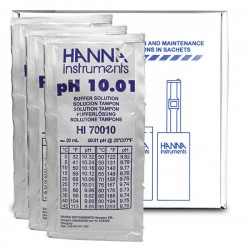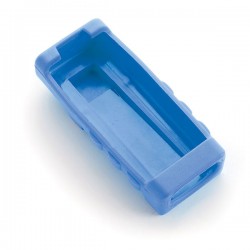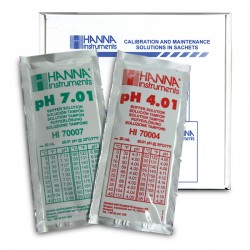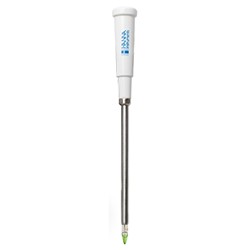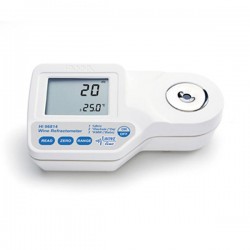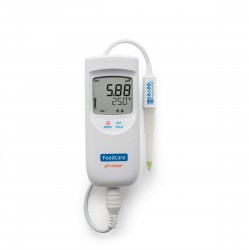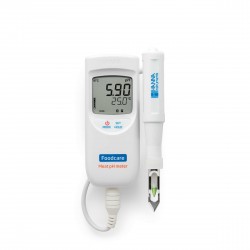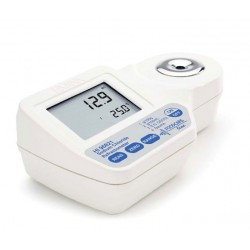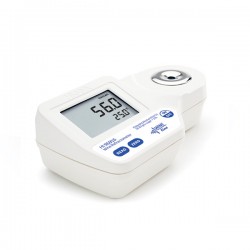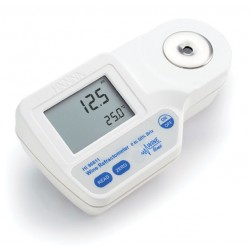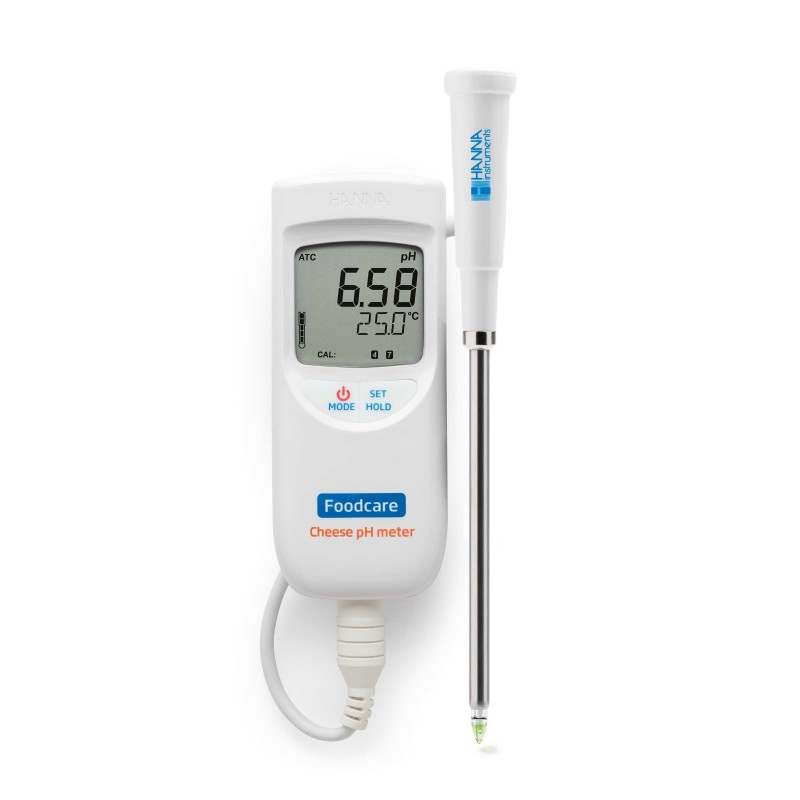

HI-99165 Portable pH/Temperature Meter for Cheese Analysis
In Stock 2 Items available
HI-99165
The HI-99165 portable pH meter together with FC2423 combination pH electrode is designed to measure pH during cheese production.
The HI-99165 is a lightweight, portable pH and temperature meter. It features a two button operation system and is simple to use. It has a waterproof and compact casing, large dual-line display, and automatic pH calibration at one or two points.
The FC2423 is a penetration style pH electrode with a conical sensing tip and features an easy to clean, stainless steel sheath and single junction gel filled reference with a free diffusion sleeve style reference junction. The electrode is designed for penetration into solids and emulsions for direct measurement of pH in cheese products.
FC2423 has a built-in temperature sensor for temperature compensated pH readings and an integrated preamplifier to provide measurements impervious to noise and electrical interferences.
Main features of the meter
- Simultaneous pH and temperature measurements on a large dual-line LCD display
- Automatic pH calibration at one or two points within two memorised buffer sets (standard or NIST)
- Selectable temperature unit (°C or °F)
- Electrode condition indicator
- mV of pH measurement for electrode check
- FC2423 dedicated pH with integrated temperature sensor
- Probe quick connect system
- Battery life indication and low battery detection
- Keystroke confirmation tone
- Auto-off function
- Waterproof casing IP67
Recommended cleaning solutions: HI-700642p Cleaning solution for cheese deposits, 25 x 20ml sachets.
Available to buy separately
Protective rubber boots in orange (HI-710028), blue (HI-710029) or green (HI-710030).
Application importance
pH is an essential measurement throughout the entire cheese making process. From the initial measurements of incoming milk to the final measurements of ripened cheese, pH is the most important parameter for cheese quality and safety control.
Acidification of milk begins with the addition of bacterial culture and rennet. The bacteria consume lactose and create lactic acid as a by-product of fermentation, lowering the pH of the milk. Once the milk reaches a particular pH, the rennet is added. The enzymes in rennet help to speed up curdling and create a firmer substance. For cheesemakers that dilute their rennet, the pH of the dilution water is also critical; water that is near pH 7 or higher can deactivate the rennet, causing problems with coagulation .
Once the curds are cut, stirred, and cooked, the liquid whey must be drained. The pH of whey at draining directly affects the composition and texture of the final cheese product. Whey that has a relatively high pH contributes to higher levels of calcium and phosphate and results in a stronger curd. Typical pH levels at draining can vary depending on the type of cheese; for example, Swiss cheese is drained between pH 6.3 and 6.5 while Cheddar cheese is drained between pH 6.0 and 6.2 .
The next stages of milling and salting are affected by pH as well. During milling, curds are cut into smaller pieces to prepare the cheese for salting, curds with a lower pH at milling result in a harder cheese. A low pH will also result in higher salt absorption during the salting stage.
When curds are pressed into a final solid form, the pH directly affects how well the curds fuse together. If the pH is too high during pressing, the curds will not bind together as well and the final cheese will have a more open texture.
During brining, the cheese soaks up salt from the brine solution and loses excess moisture. The pH of the brine solution should be close to the pH of the cheese, ensuring equilibrium of ions like calcium and hydrogen. If there is an imbalance during brining, the final product can have rind defects, discolouration, a weakened texture, and a shorter shelf life.
Cheese must fall within a narrow pH range to provide an optimal environment for microbial and enzymatic processes that occur during ripening. Bacterial cultures used in ripening are responsible for characteristics like the holes in Swiss cheese, the white mould on Brie rinds, and the aroma of Limburger cheese. A deviation from the ideal pH is not only detrimental to the ecology of the bacteria, but also to the cheese structure. Higher pH levels can result in cheeses that are more elastic while lower pH levels can cause brittleness.
Read More
| pH Range | -2.00 to 16.00 pH | |
| pH Resolution | 0.01pH | |
| pH Accuracy | ±0.02 pH | |
| Calibration | automatic, one or two-point selectable buffer set standard pH 4.01, 7.01, 10.01 or NIST pH 4.01, 6.86, 9.18 | |
| Temperature Compensation | automatic from -5.0 to 105.0°C | |
| Temperature Range | -5.0 to 105.0°C | |
| Temperature Resolution | 0.1°C | |
| Accuracy | ±0.5°C (up to 60°C); ±1.0°C (outside) | |
| mV range | ±825 mV (pH-mV) | |
| Resolution | 1 mV | |
| Accuracy | ±1 mV (pH-mV) | |
| Additional Specifications: | ||
| Probe | FC2423 pre-amplified pH/temperature probe with stainless steel body, DIN connector and 1m cable (included) | |
| Battery Type/Life | 1.5V AAA(3) / approximately 1400 hours of continuous use | |
| Auto-off | auto-off after 8 minutes of non-use | |
| Environment | 0 to 50°C; RH max. 100% | |
| Dimensions/Weight | 154 x 63 x 30 mm / 196g | |
| Case ingress protection rating | IP67 | |
| Ordering Information: | HI-99165 is supplied with FC2423 pH electrode with internal temperature sensor, HI-70004 pH 4.01 buffer sachet, HI-70007 pH 7.01 buffer sachet, HI-700642 electrode cleaning solution sachets (2), batteries, instruction manual and rugged carrying case |





